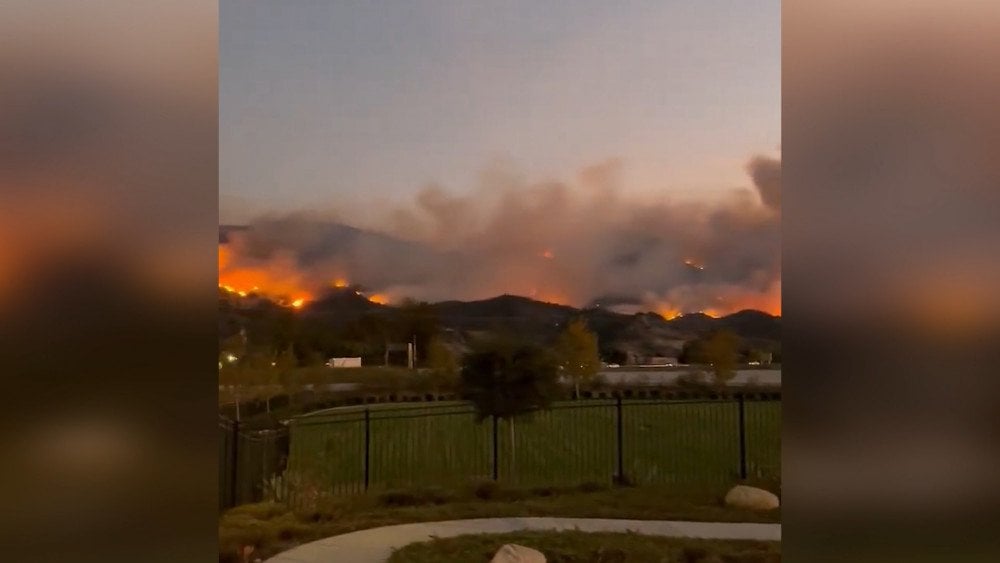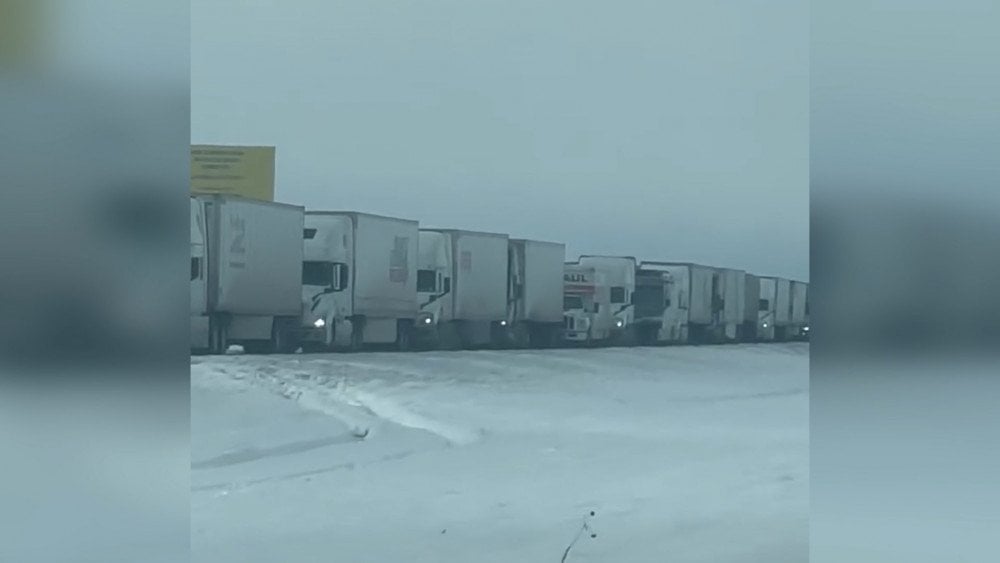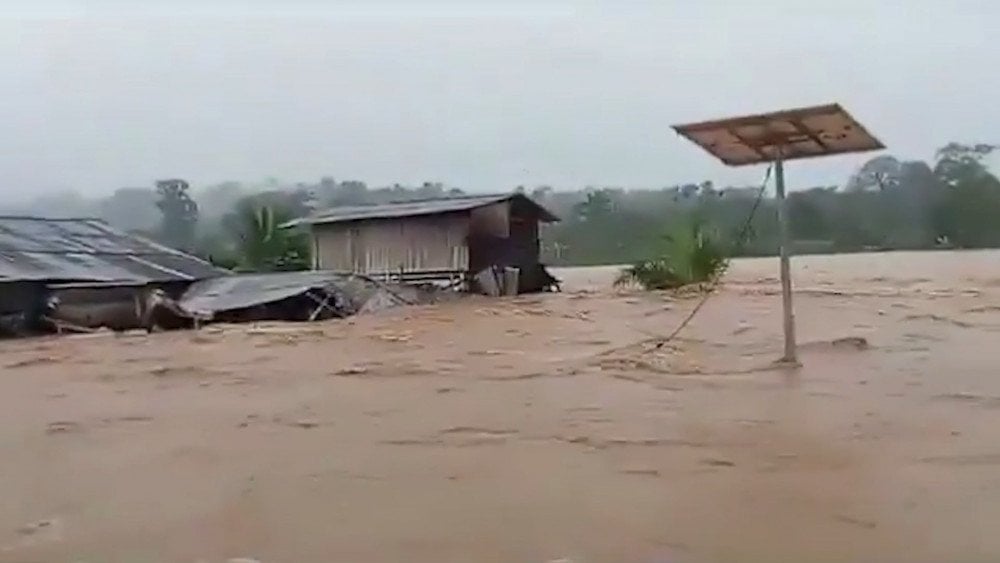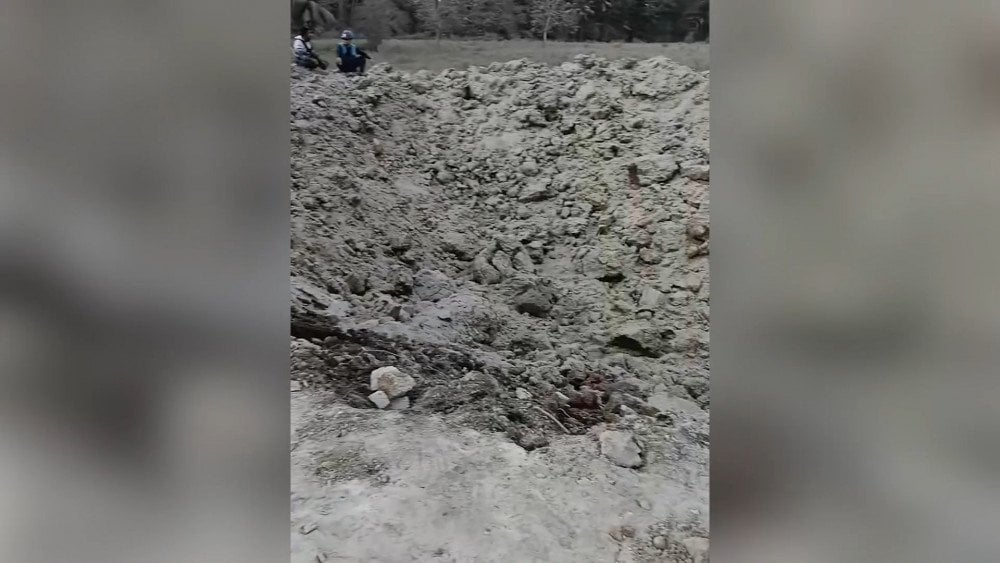Summary of Climate Disasters on the Planet: November 6-12, 2024
Cuba
On November 6, tropical hurricane Rafael struck Cuba with devastating force.

Full force of tropical hurricane Rafael struck Cuba
Rapidly intensifying from category 1 to category 3 within less than 24 hours before making landfall, it struck the western part of Artemisa Province, causing dangerous storm surges, heavy rains, and destructive winds with speeds of up to 185 km/h (115 mph).
The storm inflicted severe damage on the provinces of Mayabeque and Artemisa where authorities urgently evacuated residents from coastal areas. Havana, the Cuban capital city, also suffered greatly from torrential rains and mighty winds.
Authorities suspended public transportation, closed schools, and canceled flights. Over 100 Canadian tourists had to be evacuated from the popular resort on Cayo Largo island.
As hurricane Rafael approached the Cuban coast, its powerful winds disrupted the national power grid, leaving more than 10 million people without electricity. This marks the second major power outage in the country in recent weeks. The previous outage occurred on October 18, just before the arrival of tropical hurricane Oscar whose impact worsened the situation and severely hindered recovery efforts.

Hurricane Rafael severely damaged power lines in Cuba
Rafael also forced oil companies to halt operations in the Gulf of Mexico and evacuate their personnel: Chevron evacuated all its staff, while Shell and BP withdrew employees from several platforms.
Four days after the hurricane, Cuba was shaken by a series of powerful earthquakes. According to the National Center for Seismological Research (CENAIS), on the morning of November 10, two strong tremors with magnitudes of 6.0 and 6.7 occurred within an hour.
They were followed by 2,300 aftershocks with magnitudes of up to 4.3 (as of the morning of November 13).
Nearly 600,000 residents of southeastern provinces — Santiago de Cuba, Guantánamo, Granma, Holguín, and Ciego de Ávila — felt the earthquake. At least seven people were injured.
According to the National Civil Defense Council, more than 2,000 houses were damaged, while 26 were completely destroyed. Thirty medical facilities and 40 schools were affected. Mobile and landline phone services were disrupted in the region.
In the Sierra Maestra mountains, at least nine landslides were reported.
It’s important to note that earthquakes with magnitudes of 6 or higher are extremely rare in the Caribbean region near Cuba. Over the past 50 years, only seven such events have occurred in the area.
USA
On November 6, a wildfire swept through the mountains in Ventura County, California. Smoke from the fire painted the state’s skies orange.

A large-scale wildfire in Ventura County, California, USA
Winds gusting up to 96 km/h (60 mph) spread fire across hundreds of hectares in mere hours. Every four seconds, an area the size of a football field was burned. Embers from the fire traveled up to 4 km (2.5 miles), sparking additional spot fires.
Mighty winds made it impossible to deploy aircraft for firefighting efforts. As a precaution, power was cut off to nearly 70,000 customers.
By November 8 evening, when winds finally subsided, the fire was 14% contained. It covered the area over 8,300 hectares (20,510 acres), destroyed 134 buildings, and injured five people.
The Ventura County Fire Chief urged residents not to try to defend their homes on their own. He stated that some people stayed until the last moment, but when the fire got too close, they couldn’t breathe or see, risking becoming trapped. Risking their own lives, firefighters had to evacuate many such individuals in their trucks, pulling them out of the rapidly advancing flames.

Wildfire approaching houses, Ventura County, California, USA
On November 4-9, a winter storm brought record early snowfall to Colorado and New Mexico.
The highest snowfalls reached 135 cm (53 inches) in the Fort Garland area of Colorado and 91 cm (36 inches) in Rociada, New Mexico. Snow, mighty winds, and heavy cloud cover made travel difficult in some areas and resulted in closure of interstate highways 25 and 40 in northern New Mexico, interstate 70 in Colorado, and numerous local roads. Hundreds of vehicles were trapped in the snow.

Record snowfall halted traffic on US highways
Denver saw nearly half a meter (20 inches) of snow, marking the largest November snowfall in 40 years. At Denver International Airport where 48.76 cm (19.2 inches) of snow fell, more than 1,000 flights were delayed or canceled.
The snow fell weeks earlier than usual in the region, before leaves had fallen from trees. This caused downed trees and scattered power outages, leaving over 50,000 customers without electricity. Early snowfalls also hit several other states, with more than 60 cm (23.6 inches) falling in parts of Kansas, Nebraska, and the highlands of Texas and Oklahoma.
On November 6-7, southeastern parts of the US were hit by severe flooding from moisture bands associated with Hurricane Rafael.

Massive rainfall caused streets to flood in Georgia, USA
Torrential rains flooded several counties in Georgia, USA. According to the National Weather Service, nearly 460 mm (18 inches) of rain fell in some areas. Cars were stranded on dozens of flooded roads.
In Orangeburg County, South Carolina, up to 380 mm (15 inches) of rain fell within 24 hours. The water level in Edisto River reached 4.67 m (15.3 feet), surpassing previous records from 1928 and 2015 by 30 cm (11.8 inches). This caused dam breaches and flash flooding.
Large parts of Orangeburg and surrounding areas were submerged. The disaster caused massive damage to infrastructure. Several downtown businesses were beyond repair and will need to be demolished. The emergency services director in Orangeburg County reported that about 150 roads were closed, many of them so severely damaged that they are now impassable.

Heavy rains damaged road infrastructure in Orangeburg County, South Carolina, USA
The flood started so suddenly that people were trapped where the water caught them: in stores, offices, and cars. Rescuers had to evacuate people by boats.
Authorities confirmed the deaths of two people found in submerged vehicles.
The county’s emergency director remarked that over 50 years of living there, he had never seen water levels rise so high or flooding cause such extensive damage to infrastructure.
Volcanic Activity
Russia
Starting from November 7, Shiveluch volcano on Kamchatka Peninsula has erupted three times a day, according to the Kamchatka Volcanic Eruption Response Group of the Institute of Volcanology and Seismology (Far Eastern Branch of the Russian Academy of Sciences). Researchers issued warnings of heightened volcanic hazards.
Shiveluch released massive ash columns into the atmosphere, with the tallest reaching 11 km (6.8 miles). An ash plume spread 120 km (74.6 miles) eastward. The volcano’s activity posed risks to local and international air traffic.
One particularly intense eruption destroyed the newly formed lava dome named “300 Years of the Russian Academy of Sciences,” triggering a pyroclastic flow that extended over 10 km (6.2 miles) down the volcano’s western slope.
Pyroclastic flows are dangerous mixtures of scorching gasses, rocks, and ash.
Other hazardous flows, known as lahars, also started descending the mountain.
Lahars are mudflows created when hot volcanic materials mix with cooler waters, snow, or ice.
For several days, the skies over Ust-Kamchatsk were covered in ash haze, and snow turned gray. Sidewalks and courtyards were coated in a thick layer of ash.

Volcanic ash covered vehicles and roads in Kamchatka, Russia
Roads became extremely slippery because volcanic ash drastically reduces tire traction. Schools and kindergartens were closed, and sports and cultural events were canceled. Residents were advised to wear masks and stay indoors whenever possible. People reported difficulty breathing, and animals outside were also struggling. Ventilating homes was impossible. Adjusting to such conditions was unimaginable.
Experts from the Institute of Volcanology and Seismology of the Russian Academy of Sciences note the Shiveluch eruption was unexpected. Typically, the approach of a volcanic event is evident from seismic signals. However, before the November 7 eruption, seismic activity remained at background levels, while thermal anomalies and gas-steam emissions were weakly expressed. This kind of atypical behavior makes Shiveluch unpredictable and, therefore, more dangerous.
Colombia
On November 11, in the Colombian municipality of Turbo, Antioquia Department, the Los Aburridos mud volcano erupted, spewing mud and ash into the sky, according to the Colombian Geological Service (SGC). Moments later, a loud explosion occurred, and a fiery column shot out of the crater.

Fiery column erupting from the Los Aburridos mud volcano crater, Antioquia Department, Colombia
Consequently, eight people lost consciousness due to smoke and gas inhalation. The victims were taken to healthcare facilities. The eruption damaged 109 houses and blocked a local road.
The mud volcano’s eruption added to the series of disasters in Colombia where torrential rains and floods affected more than 200,000 people, prompting the president to declare the country a disaster zone.

Catastrophic floods swept through Colombia
Italy
On the morning of November 10, Mount Etna in Italy became active, and less than an hour later, a powerful explosive eruption occurred.
A column of ash rose to an altitude of over 9.1 km (5.7 miles) above sea level.

Massive ash column from Mount Etna’s eruption towers over the landscape, Italy
Due to thick clouds, visual observations of the volcano were complicated, so the situation was assessed using satellite imagery.
Ash began settling in communities to the east and southeast of the volcano, coating houses and roads with a black layer. In some areas, it mixed with rain, forming a sticky and heavy mass. The most affected areas included Milo, Torre Archirafi, Santa Venerina, and Giarre.
The Etna Observatory changed the aviation hazard color code from yellow to red.
Catania Airport operated on high alert, prepared to close if the wind shifted direction.
Indonesia
According to the Center for Volcanology and Geological Hazard Mitigation, the Lewotobi Laki-Laki volcano in Indonesia continues to exhibit heightened activity, causing damage to residential areas and infrastructure. The volcano’s danger level remains at the highest, with its aviation hazard color code set to red.
According to the Darwin VAAC, ash from one of the powerful eruptions rose to an altitude of 16.7 km (10.4 miles) above sea level.
The danger radius around Lewotobi Laki-Laki crater has been extended to 9 km (5.6 miles) southwest to northwest.
Persistent ashfall has ruined many crops and plants used as livestock feed.

Damaged and ash-covered houses and plants after the eruption of Lewotobi Laki-Laki volcano in Indonesia
Five villages in the Talibura district — Kringa, Timutawa, Udek Duen, Hikong, and Ojan — were the hardest hit by the eruption. Residents required medical attention, with an increase in visits to healthcare centers for respiratory issues and coughing.
Local residents and thousands of tourists were stranded on an island in East Flores Regency, East Nusa Tenggara Province, due to a temporary suspension of air traffic.
Authorities mobilized ferries and other sea transport options to facilitate the movement of people and goods.
Hadi Wijaya, head of the Center for Volcanology and Geological Hazard Mitigation, noted that the eruption of Lewotobi Laki-Laki volcano on November 3 was highly unusual.
Firstly, explosive eruptions are uncharacteristic of this volcano.
Secondly, enormous incandescent rocks were ejected up to 7 km (4.4 miles) away, further emphasizing the explosion intensity.
Those rocks left craters in the ground up to 15 m (49.2 feet) in diameter and 5 m (16.4 feet) deep.

Craters left in the ground by massive incandescent rocks ejected during the Lewotobi Laki-Laki eruption in Indonesia
Last week in Indonesia, other volcanoes also displayed heightened activity. On November 7, five volcanoes — Lewotobi Laki-Laki, Semeru, Marapi, Ibu, and Dukono — erupted simultaneously.
Why is volcanic activity increasing worldwide, and why are eruptions becoming unusual and often difficult to predict?
Typically, eruptions occur when magma rises from a reservoir beneath a volcano, known as a magma chamber, where it has been stored since the previous eruption. However, researchers are now observing an unusual phenomenon: magma starts ascending straight from the Earth’s deeper layers. That magma has a different composition, and for it to rise from such depths with such force, an immense amount of additional energy is required.
Studies indicate that, due to an external cosmic influence, significant amounts of energy are delivered to Earth’s inner core. This energy is converted into heat that warms the mantle. As a result of such heating, magma becomes hotter and more fluid. Acceleration of the planet’s rotation increases centrifugal force, facilitating the ascent of magma from deep layers to the surface. During this process, pressure in the ascending magma decreases, causing dissolved gasses to rapidly escape. This results in expansion and “boiling” of magma, similar to the effect on a diver’s blood during a rapid ascent.
This type of magma breaks through the Earth’s crust more quickly and reaches the surface almost unimpededly.
A detailed explanation of the complex processes currently occurring in the Earth’s interior was given at the forum “Global Crisis. The Responsibility”.
These abnormal processes explain why eruptions occur suddenly without clear precursors, as in the case of Shiveluch volcano, and why powerful explosive eruptions become more frequent, occurring instead of typical ones.
Although many people are reluctant to acknowledge it, all signs indicate that our planet is breaking down from within.
We are facing a serious threat because similar events cyclically occurred every 12,000 years and caused dramatic changes on the planet and catastrophic consequences for all life.
The global community must go beyond merely discussing the climate crisis and take practical action. We need to unite all scientific potential, engage the best experts to find solutions, and consider diverse approaches.
This is our only chance to tame the climate before it’s too late!
Watch the video version of this article here:
Leave a comment